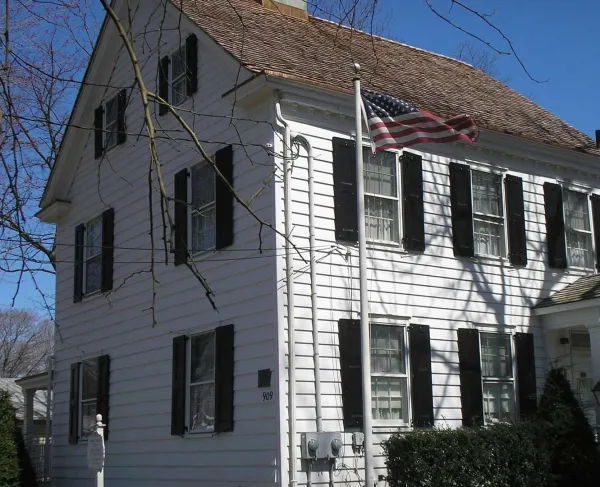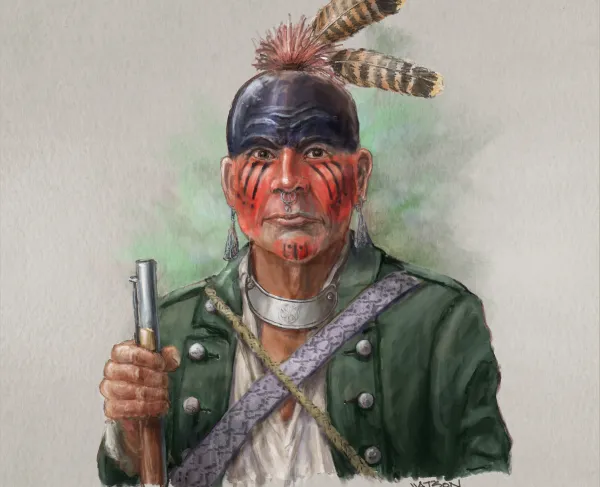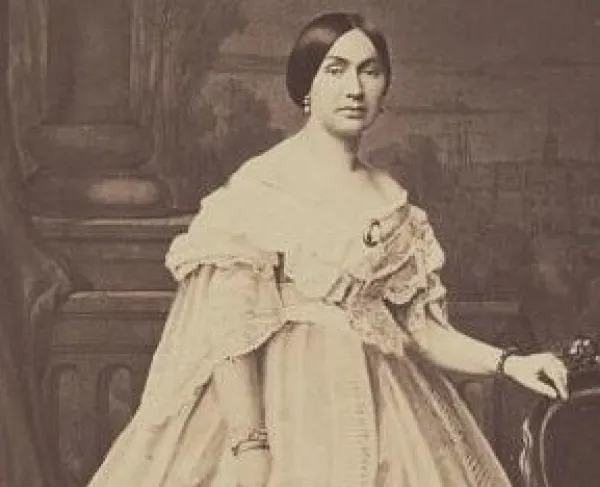Sacagawea

In the late fall of 1804, explorers Meriwether Lewis and William Clark arrived near present-day Washburn, North Dakota to set up a camp to endure the harsh winter. During their stay, however, they faced another problem. Their guide, a French fur trapper named Larocque, had abandoned them, depriving them of the ability to communicate with the local natives, important for negotiating for supplies and demonstrating their peaceful intent. Soon after starting construction on Fort Mandan, the pair were hit by a stroke of luck. Yet another French Canadian, this one named Toussaint Charbonneau, offered not only his services, but those of his wife, a Shoshone woman named Sacagawea.
Though the world in which Sacagawea grew up did not have extensive contact with individual Europeans, the Shoshone and Great Plains society as a whole was greatly affected by their arrival centuries earlier. The spread of smallpox annihilated the population, but the simultaneous adoption of horseback riding made it easier to adapt to a nomadic lifestyle. For tribes constantly on the move, interaction, peaceful and otherwise, with other Indian groups became increasingly common, ultimately transforming the Northwestern plains into a network of nomadic and semi-settled tribes and larger confederacies. As European merchants and fur trappers encroached further into the area, however, they actively sought out more concentrated areas as trading centers, giving the more settled tribes better access to guns and other tools, and driving up competition for food and resources between native groups.
As the Shoshone were not a literate society, sources on Sacagawea’s early life are scarce, but what sources we do have indicate she was born sometime in 1788 at the foot of the Rocky Mountains, where her tribe, the Lemhi, eked out a meager existence. At the age of 12, a raiding party from the Siouan-speaking Hidatsa tribe took her prisoner and sold her off to Charbonneau, who lived with them in their North Dakota village. Charbonneau eventually married both Sacagawea and another Shoshone woman named “Otter Woman,” and by the time Lewis and Clark established Fort Mandan, the former was pregnant with her first child, Jean-Baptiste, who was born on the 11th of February that winter. The explorers both struck up a friendship with the young woman, and quickly learned that she was far more linguistically adept than her husband, and so requested to Charbonneau that he bring her along as an additional interpreter, to which he agreed.
The only woman to accompany Lewis and Clark, Sacagawea is not mentioned often in their journals, but provided critical support nonetheless. Bringing her child Jean-Baptiste along, she traveled with the expedition from Fort Mandan all the way to the Pacific Coast and back again. Her knowledge of the Shoshone lands she grew up on provided great help as the group crossed over the Rocky Mountains, locating passes they would not have been able to find otherwise. But the most useful skillset she brought to the group was diplomatic. Crossing through her Idaho homelands became especially easy thanks to a chance reunion with her brother Cameahwait, now a Lemhi chief. Many historians speculate that her presence as a woman alone was enough to protect the group from hostile actions, as inter-tribal diplomacy was well within the wheelhouse of women for many groups in the Northwest, whereas an all-male group would have given the picture of a hunting or raiding party.
While on the return trip home, the expedition made their final goodbyes to Sacagawea, Charbonneau and their family at Fort Mandan. Writing to the Frenchman, Clark praised both of their conduct, mentioning that, “your woman who accompanied you that long dangerous and fatigueing[sic] rout to the Pacific Ocian[sic] and back diserved[sic] a greater reward for her attention and services on that rout…” He also offered to raise Jean-Baptiste, whom he had fondly nicknamed “Pomp,” should they ever travel to his home in Virginia. Sacagawea herself did not have the opportunity to take him up on that offer, however, as she likely fell ill and died on December 20th, 1812, a year after giving birth to a daughter, Lizette. In the 1920’s, Dr. Charles Eastman, a Sioux physician working for the National Bureau of Indian Affairs, speculated that she did not in fact die on that date, but rather left Charbonneau at some point to live among the Comanche, where she began a new family and passed away in her 90’s. Critics, however, have noted that despite his extensive research on the issue, including finding the remains of the woman he suspected to be Sacagawea, Eastman never found enough hard evidence to support his claim. Jean-Baptiste, however, did grow up to be something of a minor celebrity in North America and Europe, working as a fur trapper like his father, befriending many European aristocrats, and serving as a scout in the Mexican-American War.
In spite of what was likely a short life, Sacagawea looms large in the American consciousness, thanks mostly to her contribution to the Lewis and Clark Expedition. The list of monuments and memorials named for her is extensive, but the most famous is her iconic depiction on the US gold dollar coin, where she is portrayed with her infant son. A year after the coin’s first issue, President Bill Clinton gave her the rank of Honorary Sergeant in the U.S. Army for her service.





